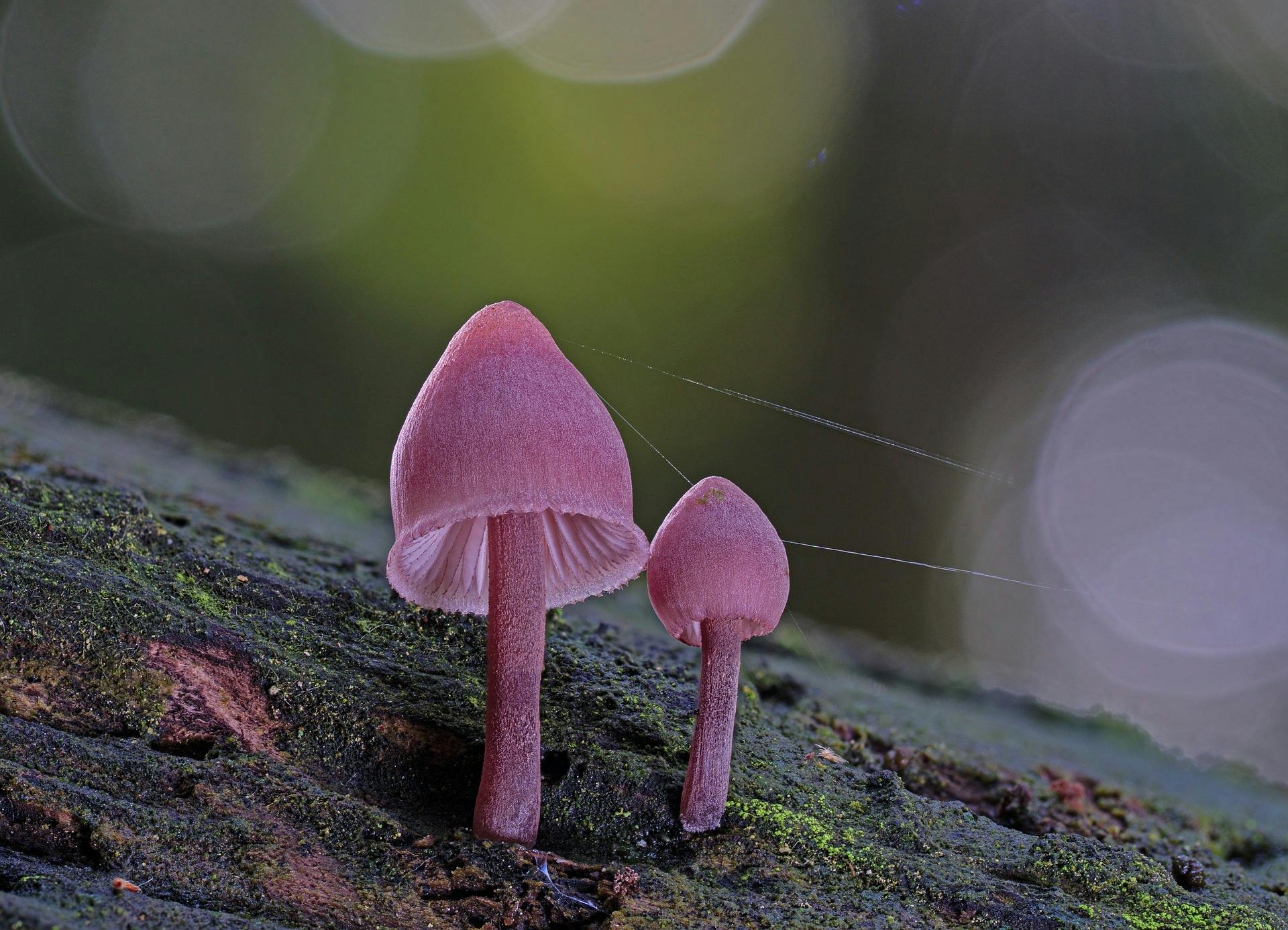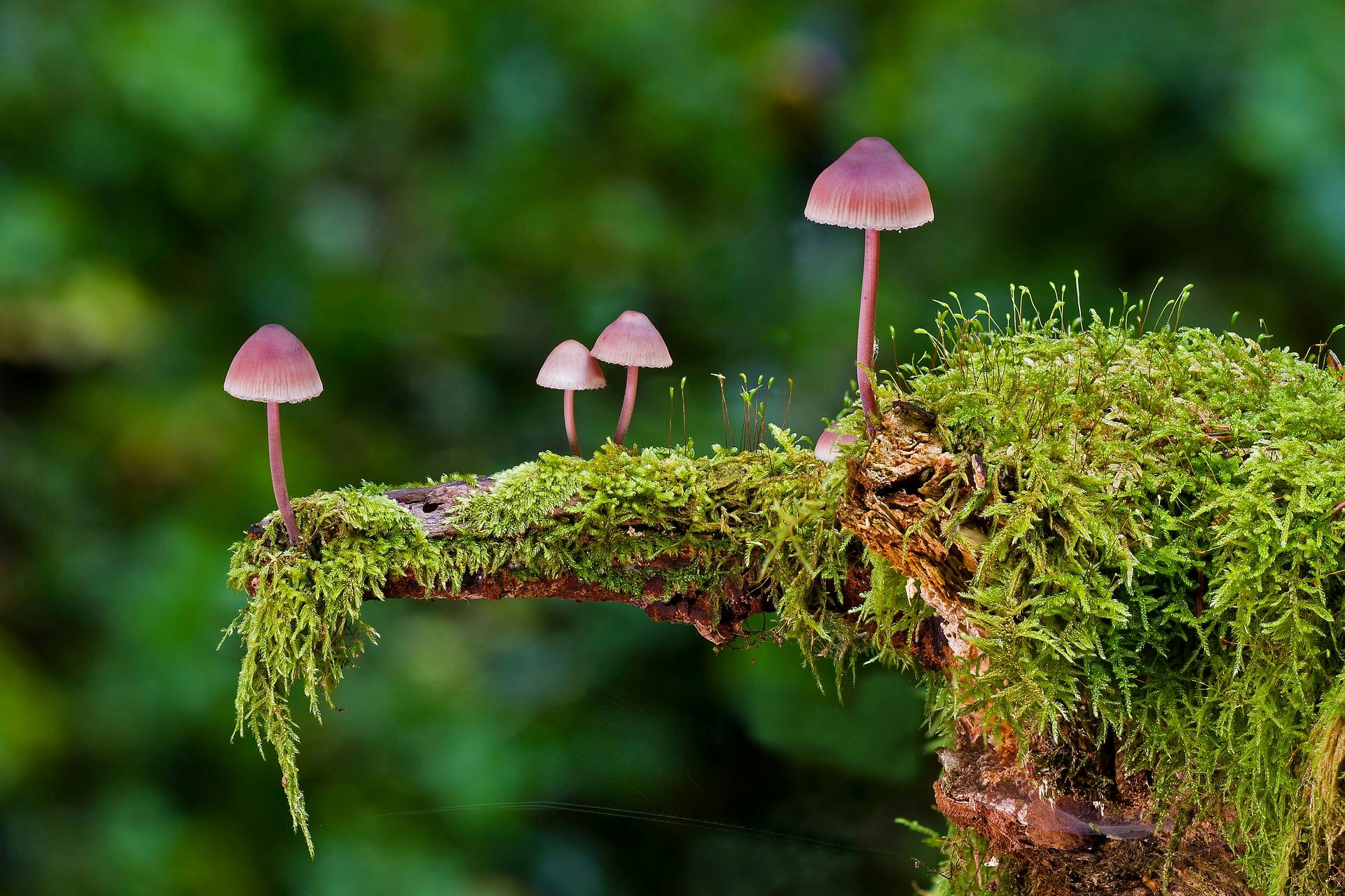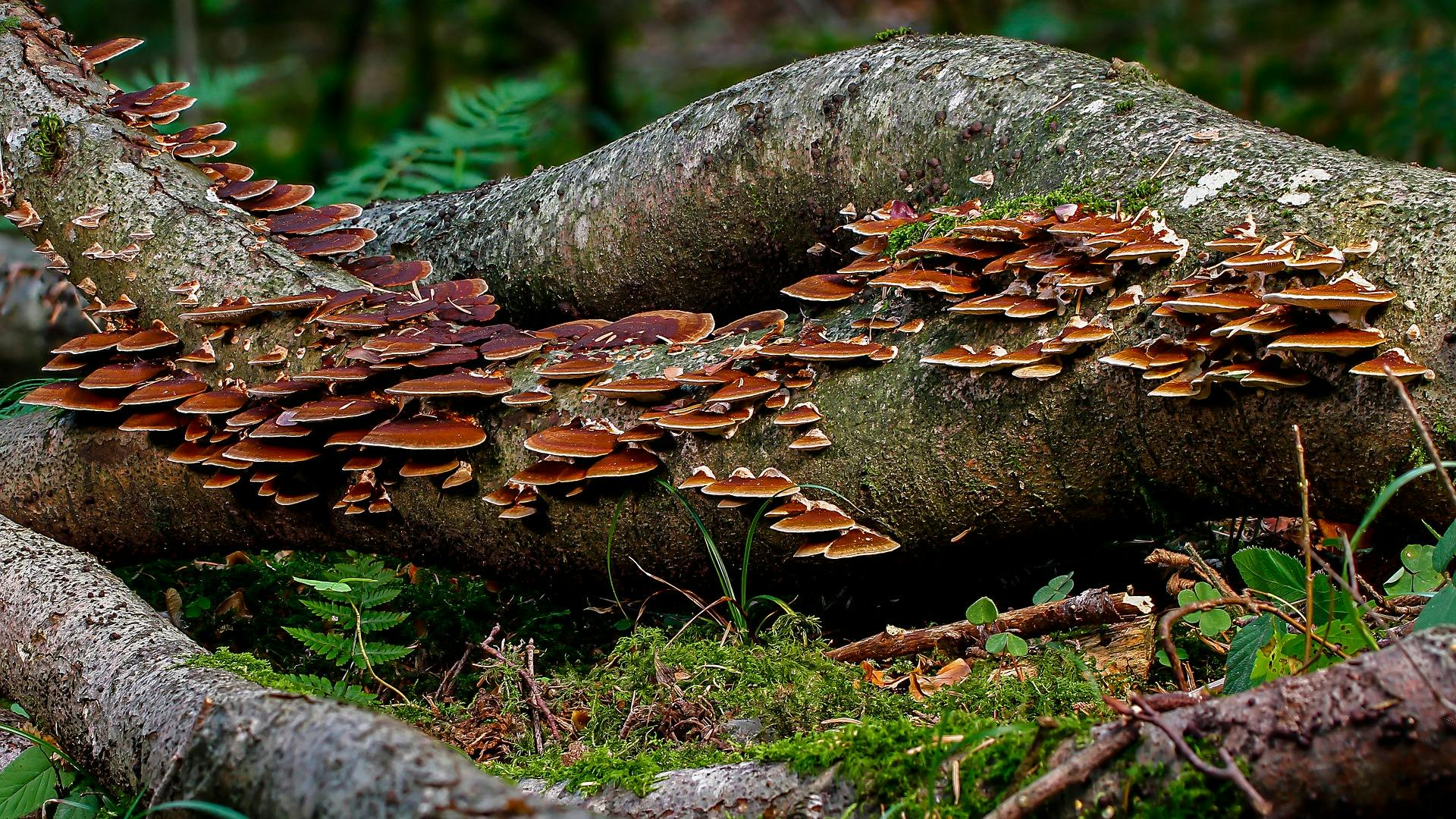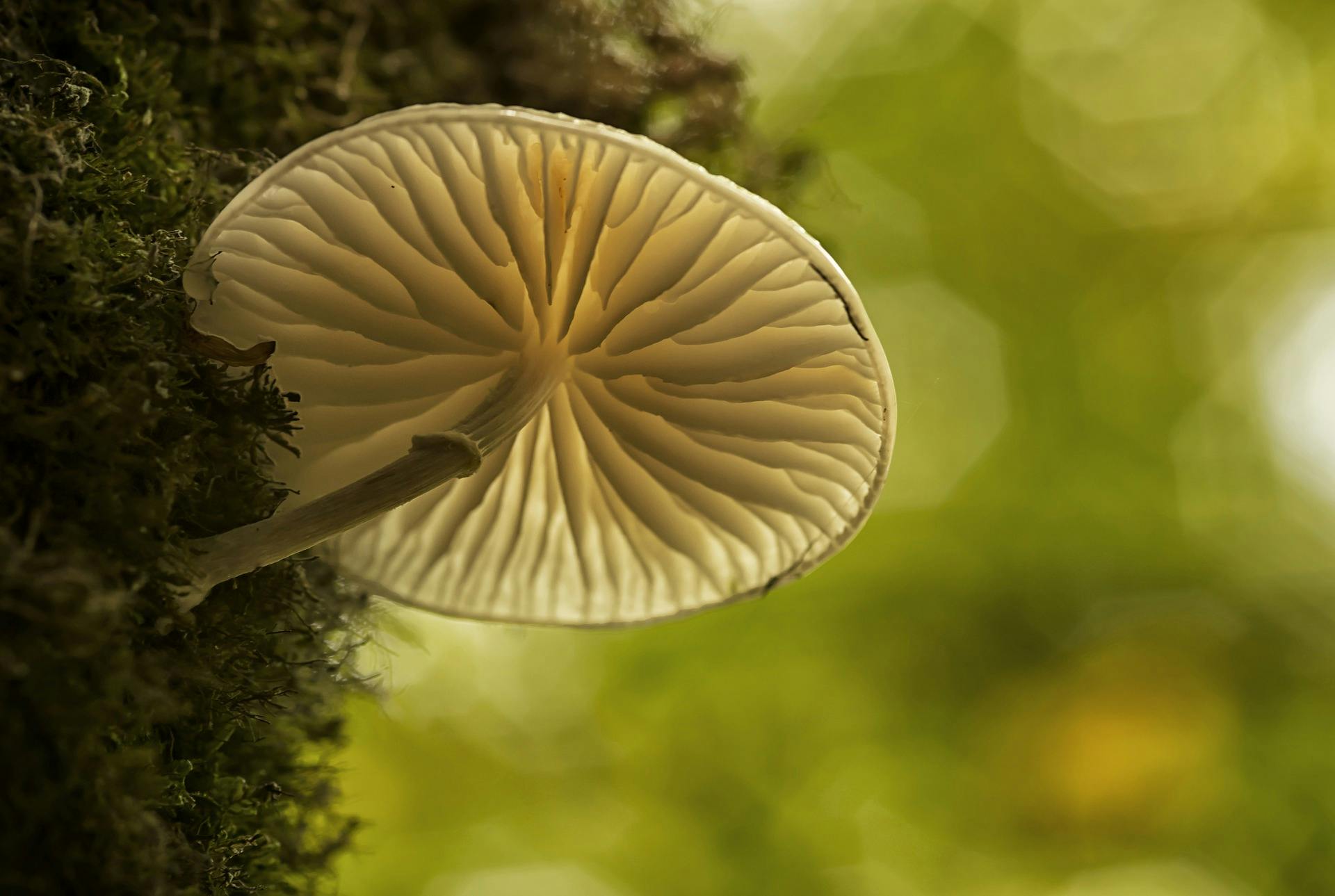Skip to content

 Fungi: the superheroes of our future
Fungi: the superheroes of our future
Fungi munch on rocks and wood, creating soils and nourishing all life forms. Root symbiotic fungi form the gifting economy of the Wood Wide Web; the sophisticated network which connects and feeds the world, through intimate relationships with the smallest of bacteria to the largest of trees. While some feast on pollutants, others provide renewable resources from agricultural and industrial wastes - there are no limits to what these superheroes can do.


Fungi, the forgotten heroes
Fungi are the forgotten heroes of our past. They played a major role in creating modern soils by decomposing rock with their powerful enzymes and acids; without which plants would not have been able to access nutrients and colonise land. The most fascinating and perhaps most telling symbiosis about Earth’s aquatic past shaping the origins of terrestrial plants, is the photosynthetic relationship between fungi, algae and other organisms forming lichens. Most terrestrial plants rely on their symbiotic root fungi (mycorrhizal fungi) to thrive and all plants rely on endophytic (plant dwelling) fungi and other organisms like bacteria. The root symbiotic fungi (mycorrhizal fungi) supply essential minerals and other nutrients to plants in exchange for photosynthetic carbon, they also protect their hosts from pathogens and pollutants such as heavy metals. These resilient and adaptable organisms can in fact be inoculated onto the roots of specific host plants including trees, with the aim of cleaning up and restoring mining sites. Some fungi have developed a taste for radioactive isotopes, utilising radioactivity in a similar way plants use sunlight to gain energy. These superheroes readily colonise nuclear reactors and can serve as the most efficient nuclear waste sponge if only given a chance.


Fungi made Earth livable
All of our agricultural crops grow best when partnered with their symbiotic fungal counterparts, which feed their plant hosts and therefore us, the most sought-after minerals, vitamins and other nutrients. This nullifies the need for chemical fertilisers, since root symbiotic and soil saprophytic fungi along with a cohort of other soil microorganisms cooperate to feed plants the nutrient the plants requires. Root symbiotic and endophytic fungi also defend their host plants, along with bacteria, they comprise the plant immune system, making it utterly unnecessary to use pesticides. When soil fungal biomass exceeds or is equal to that of bacterial biomass, agricultural weeds struggle to proliferate, abolishing the need for herbicide use. And as if this wasn’t enough, some of these superheroes can draw enormous amounts of carbon out of the atmosphere and into the soil through their host plants, providing the opportunity to use all farmed crops as a giant carbon sink while reducing crop water demands.


Fungi drive forest economy
Decomposer fungi are the other superheroes which reside in our forests. They are the world’s best recyclers and without their wood decomposing superpowers, forests would starve. These superheroes break down tough woody tissue and release all the locked-up nutrients back into soil to feed soil life, allowing their root symbiotic cousins to pass on those nutrients to their host trees. This circular economy is based on the network of the fungal cells creating a thread-like structure called the mycelium. This fractal mycelial network, connects entire forests as the root symbiotic fungi partner up with several tree and sometimes multiple plant species creating the “Wood Wide Web.” This fungal network connects the entire forest into one giant superorganism, providing communication, nutrient sharing and socio-economic sustainability whereby the healthy mature trees share their photosynthetic resources with the seedlings and ground swelling plants. Imagine what the world would look like if we were to adopt this shared economic network as a template for our own economy?


Decomposing superpowers
The decomposer fungi are just as heroic as their symbiotic cousins. They don’t only much on wood but have also developed a taste for toxic petrochemicals, pesticides, herbicides, industrial dies and the most harmful of man-made poisons. The humble oyster mushroom just loves oil spills converting the hydrocarbons into delicious mushrooms. But nothing beats the superheroes that actually eat plastic. You may wonder what would happen if our fungal friends were to consume the world’s plastics and other seemingly indigestible materials? Rest assured that we will not be left without packaging and everyday objects such as bowls, tables, chairs, bricks, surfboards and insulation, as decomposer fungi will simply grow these items for us from agricultural and industrial waste. And if that was not enough, these friendly heroes will also put clothes on our backs and shoes on our feet by yielding muskin (mushroom skin). This tough mushroom leather, requiring no slaughter of any animals, does not release greenhouse gasses, or demands the use of antibiotics, pesticides or other harsh chemicals used to grow and preserve animal-based leather products.


And just in case this wasn’t enough, fungi also make diesel and jet fuels as a by-product of wood consumption, so no more need for oil drilling and spills polluting our environment. And last but not least, mushrooms are not only a delicious source of nutrients which can be grown without soil and sunlight on agro-industrial waste, providing the potential to combat world hunger. And to put the cherry on the mycelium cake, many fungi contain medicinal properties which can help us deal with illnesses like cancer, and by helping to building a healthy immune system. There remains one question: is there anything these superheroes can’t do?
Want to print your doc?
This is not the way.
This is not the way.

Try clicking the ··· in the right corner or using a keyboard shortcut (
CtrlP
) instead.